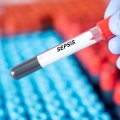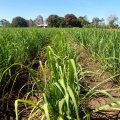
Queensland still has high rates of MDMA, cocaine and methyl amphetamine consumption, according to a report released by the Australian Criminal Intelligence Commission (ACIC).
The analysis was part of the National Wastewater Drug Monitoring Program led by The University of Queensland and The University of South Australia, which provided insights into Australia’s drug consumption for 12 substances.
The April 2021 collection covered 56 per cent of the population, or about 13 million Australians and found methyl amphetamine consumption in Queensland had steadily increased to near pre-pandemic levels, while MCMA use in the state's regional areas was the second highest in the country.
In contrast, alcohol consumption decreased in Brisbane and remained relatively stable outside the capital, while cannabis use fell.
UQ’s Queensland Alliance for Environmental Health Sciences (QAEHS) Director Professor Kevin Thomas said the team had worked closely with ACIC and UniSA since 2016 to provide 14 publicly released reports so far.
“Our partnership provides a clear picture of drug consumption across Australia, in what is one of the most advanced programs in the world,” Professor Thomas said.
 “The wastewater analysis positively impacts the community by giving response agencies, stakeholders and interested Australians the data on trends required to inform decision making on drug and public health issues.”
“The wastewater analysis positively impacts the community by giving response agencies, stakeholders and interested Australians the data on trends required to inform decision making on drug and public health issues.”
QAEHS researcher Dr Ben Tscharke said 56 wastewater treatment plants across Australia participated in the April 2021 collection, including 11 in Queensland.
“To conduct the analysis, we use an instrument that allows us to separate the different chemicals to determine drug concentrations,” Dr Tscharke said.
“We can identify which drugs are present in the wastewater, accurately measure the level of drug consumption and pinpoint areas that have the highest consumption.
“We look for drug use patterns emerging over time and how drug consumption changes when seizures by law enforcement occur, drug use policies change or to assess impacts from the pandemic.”
Australian Criminal Intelligence Commission Chief Executive Officer Michael Phelan APM said the methyl amphetamine market was very resilient because consumption was widespread in both capital cities and regional locations.
“Methyl amphetamine is a wicked problem because serious organised crime (SOC) groups both import the finished product and precursor chemicals and domestically manufacture methyl amphetamine,” Mr Phelan said.
“Wastewater analysis provides a timely indication of both the extent of supply by SOC groups and also locations where they have a footprint.
Sadly, the report shows that SOC groups will always find a way to supply illicit drug markets.” The report is available from the Australian Criminal Intelligence Commission website.
An interview with Dr Ben Tscharke and B-roll is available via Dropbox.
Image above left: PhD student Katja Shimko in the laboratory
Media: Kirsten O’Leary, UQ Communications, k.oleary@uq.edu.au, +61 (0)412 307 594.










